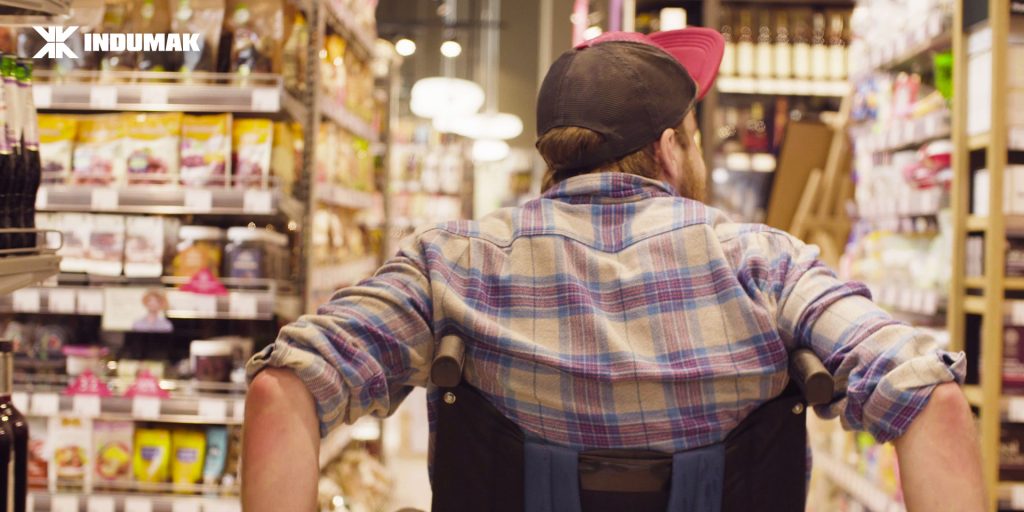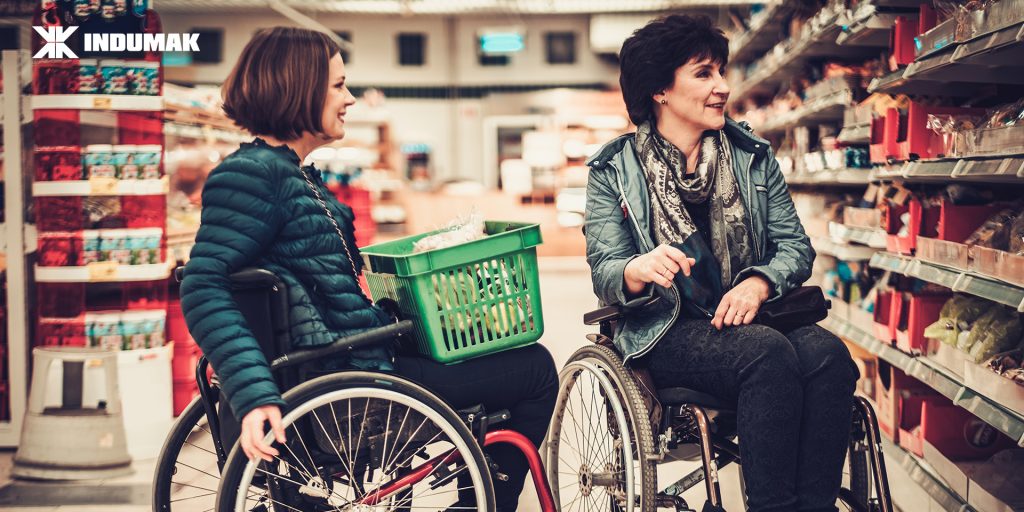
Categoria: Sem categoria
HOW ACCESSIBLE PACKAGING IMPACT THE EXPERIENCE OF PEOPLE WITH DISABILITIES
According to data released by the Brazilian Institute of Geography and Statistics (IBGE), at least 45 million Brazilians have some type of disability, about 24% of the country’s population.
This means that millions of people find it difficult to go shopping and end up dependent on help to handle or identify the information of a product they wish to purchase.
The problem also extends to the post-purchase moment, when the difficulty is to use the product at home without great efforts, without depending on someone, without making mistakes or taking risks.

Looking for a more inclusive society, many companies have mobilized to reduce the barriers that prevent a person with a disability from living more autonomously by developing accessible packaging, in which usability by consumers with different degrees of mobility or visual ability is essential. prerequisite for the design.
In that sense, designing packaging that is easier to read, open and use for person with a disability improves not only the experience for this niche, but for all customers – read on and understand why.
What is affordable packaging?
Affordable packaging is one that is easy to open and use for everyone, including those with limited functional skills and vision, which means that all labels must be easily read.
The packages that can be considered accessible incorporate a design with the proposal to be inclusive, that is, these packages can be used by most people even if there is some degree of disability.
The added effect of making packaging easier for people with disabilities is that everyone benefits.
After all, even if a person does not have any type of difficulty today, he may have visual or motor restrictions when he reaches old age, for example, or be the victim of some incident or illness that increases his limitations.
Children and left-handed people also deserve to be remembered when defining the characteristics of the packaging of their products.
But how to make product packaging more accessible?
Invest primarily in the readability of your product information. The letters must be large and clear so that the consumer does not make mistakes.
You also need to be careful about making the differences between your products clear – for example, if you produce gluten-free and gluten-free noodles, make that distinction prominent.
Contrasting colors are another good indication, as well as minimalist packaging. Avoid making your product wrapper a carnival of information.
Packaging and labels that include elements such as Braille are interesting, but should not be the only resource – research institutes specializing in the subject estimate that only 10% of blind people can read Braille.
Other ways brands can use embossing and other forming processes to create standardized symbols highlighted on their packaging.
QR Codes can be embossed to be identified and scanned, leading to audio messages explaining the product description, its ingredients and instructions for use – everything that consumers without disabilities already have access to normally.
Usability should be in focus when choosing the type of packaging. They must be easy to open and close (if the product can be stored), preventing the consumer from having to handle knives, scissors or even teeth to access the product.
Inspiring brand cases with accessible packaging for the visually impaired
Aché Laboratories was the pioneer in Brazil to adopt Braille in all its medication packaging. Because of the space, the brand chose to inform only the name of the product and its active ingredient.
However, the search for more accessibility went further. Aché also made available the package insert for its medicines in audio, an initiative to serve elderly, illiterate or vision-loss clients. The leaflet in this format can be requested at pharmacies or accessed over the internet.
Another exemplary case is Kellogg’s, famous for breakfast cereals. The brand tested the use of a QR Code on the packaging of Coco Pops, one of its products. The code leads to the reading, aloud, of the list of allergens and ingredients of the food.
The differential of this initiative lies in the use of NaviLens technology, which allows smartphones to identify the QR Code on the box up to three meters away, eliminating the need for the customer to position the phone’s camera exactly over the code.
Herbal Essences, on the other hand, applied a very interesting – and simple – idea to differentiate the brand’s shampoo and conditioner. While the first bottle contains tactile stripes, the conditioner has circles.
Other accessibility ideas to include in your packaging
In addition to these cases, we have selected a few more ideas that can help your brand adopt more accessible packaging.
Design easy-to-open mechanisms, such as those that can be opened with a single hand. Consider producing packages that have multiple ways to open them.
Make the packaging visually clear. Enjoy highly visible, high-contrast colors that are easily read by people with visual impairments. Use a large font with easy-to-read fonts for important information such as product name and expiration date.
Use Symbols: Similar to the example above, tactile markings on packaging can be used to signal what the product is about.
When developing more accessible packaging, remember that these features shouldn’t detract from your product’s visual appeal, but rather increase its overall appeal, so packaging needs to overcome design and application challenges.
Developing products with accessible packaging shows how much a company cares about social issues and values ??inclusion.







